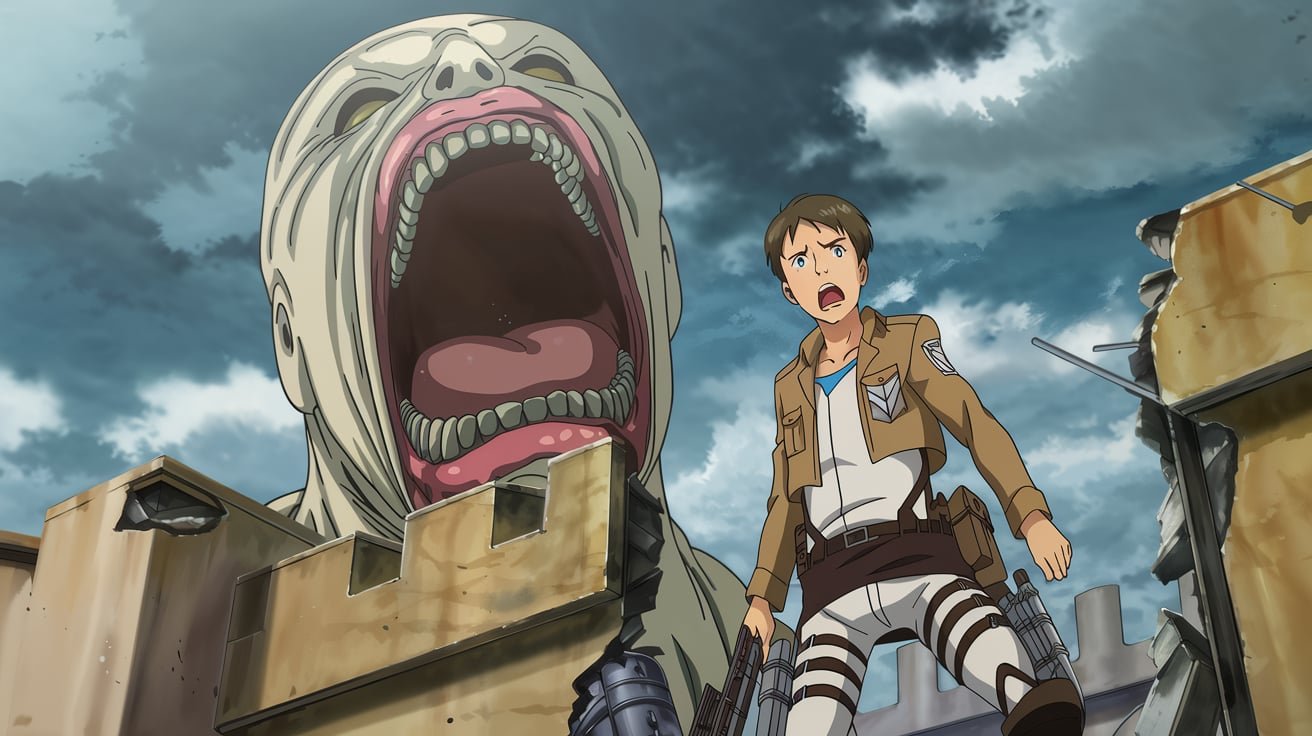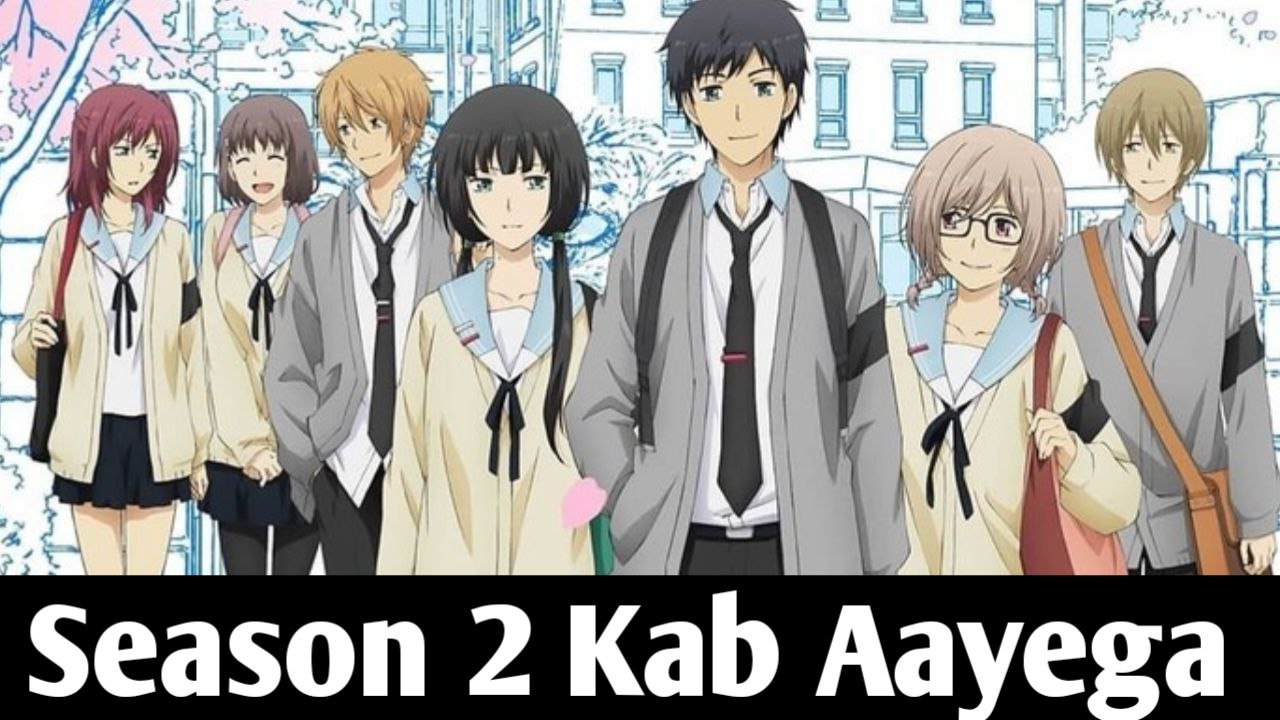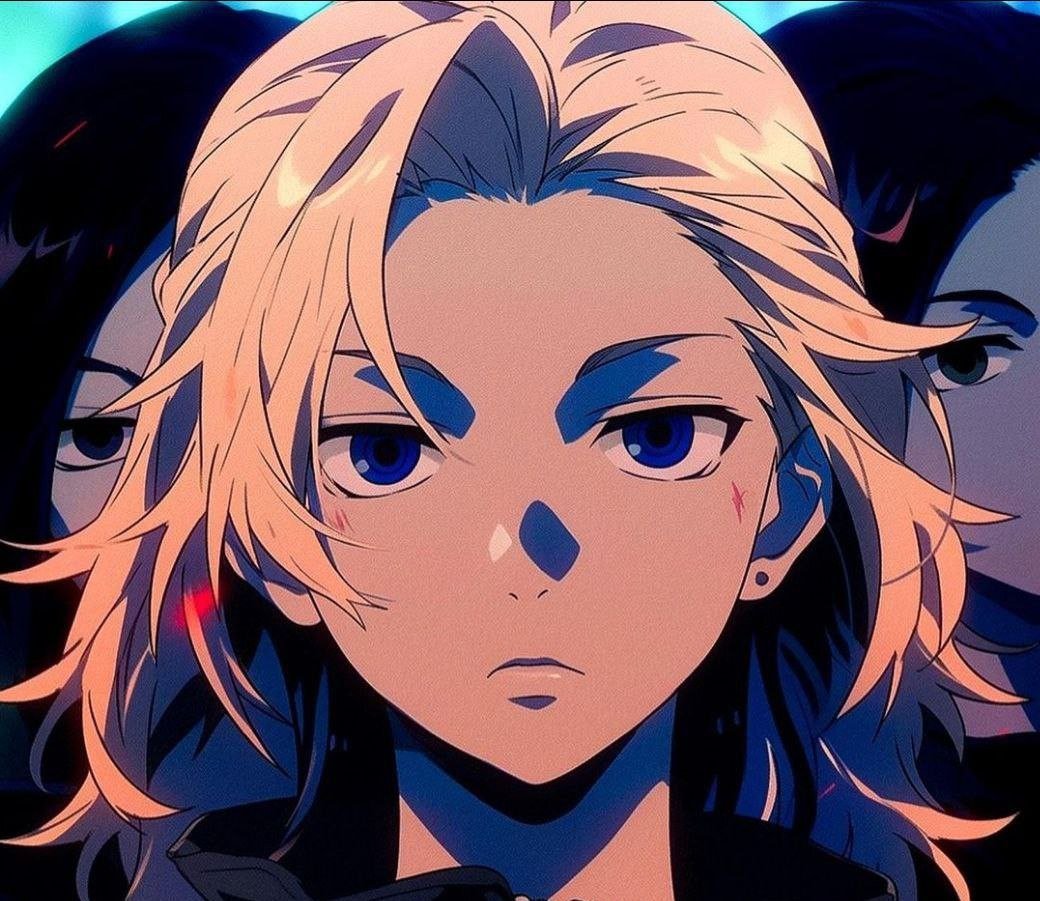Table of attack on titan season 4
Introduction to attack on titan season 4
As one of the most influential and acclaimed anime series of the past decade, “attack on titan season 4” has captured the hearts and minds of viewers worldwide. The final season, aptly titled “Attack on Titan: The Final Season,” holds significant importance as it concludes a sprawling narrative filled with intricate character arcs, moral dilemmas, and thrilling action sequences. Having originally premiered in 2013, the series has developed a vast and dedicated fan base, setting high expectations for this concluding chapter of the saga.
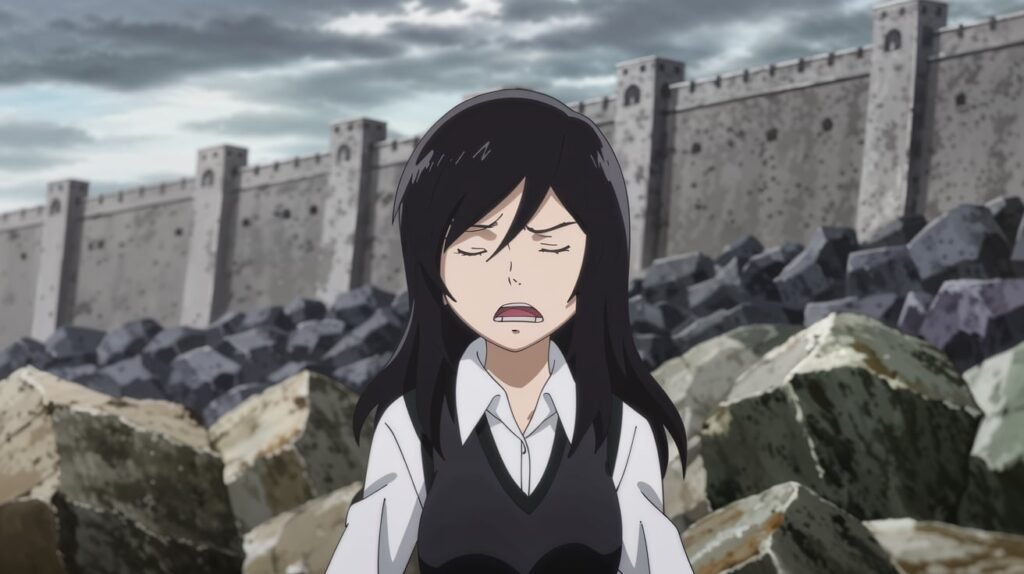
The transition of production from Wit Studio to MAPPA marks a pivotal change in the series’ trajectory. This shift has raised questions concerning the animation quality and overall representation of the original material, with fans eager to see how MAPPA would handle the legacy left by its predecessor. With a new team at the helm, including key changes in the staff, they faced both challenges and opportunities to redefine the aesthetic and narrative approach of “Attack on Titan.” As MAPPA has garnered a reputation for producing visually stunning and emotionally resonant shows, there is substantial anticipation regarding their take on the series’ climax.
Furthermore, the introduction of new elements and a distinct direction in “Attack on Titan: The Final Season” signifies the creative freedom offered to the new team. Challenges surrounding audience expectations are omnipresent, as the continuation of deeply rooted storylines from previous seasons requires both fidelity to the source material and innovation. To fulfill such expectations, MAPPA’s adaptation seeks to balance fan service with fresh perspectives, especially as the series delves deeper into the themes of conflict, freedom, and the moral complexities of war. This delicate balance shall ultimately determine the legacy of the final season and the conclusion of this iconic anime phenomenon.
Plot Overview: The Marley and War for Paradis Arcs
The final season of Attack on Titan unfolds in two primary arcs: the Marley arc and the War for Paradis arc. These segments delve into the escalating conflict between the oppressed Eldians of Paradis Island and the nation of Marley, which has long exploited their powers for military superiority. As the story progresses, viewers are introduced to a new generation of characters, two of whom are pivotal to these arcs: Gabi Braun and Falco Grice. Gabi, a warrior candidate from Marley, embodies the youthful fervor and conflicting ideologies that drive much of the narrative’s tension.
In the Marley arc, the focus shifts to the internal and external struggles of Marley, revealing the complex fabric of its society, which is built on prejudice and domination over the Eldians. This part of the story confronts the viewers with the harsh realities faced by the Eldians in Marley, contrasting their plight with the more sheltered existence of the Paradis inhabitants. With characters like Gabi emerging as representatives of this new generation, the arc challenges traditional perspectives of heroism and villainy, framing the conflict in a multifaceted light.
Transitioning into the War for Paradis arc, the narrative intensifies as it interweaves the fates of both the Marleyan warriors and the Survey Corps. This arc culminates in a direct confrontation between these factions, highlighting the fundamental clash over freedom, survival, and ideological convictions. As the heroes of Paradis face the reality of their own actions and decisions, the arcs reflect a broader commentary on the cycles of hatred and violence that perpetuate throughout history. The intertwining stories of Gabi, Falco, and the original Survey Corps members serve to enrich the storyline of Attack on Titan Season 4, bringing the saga to an epic conclusion filled with moral ambiguity and profound emotional stakes.
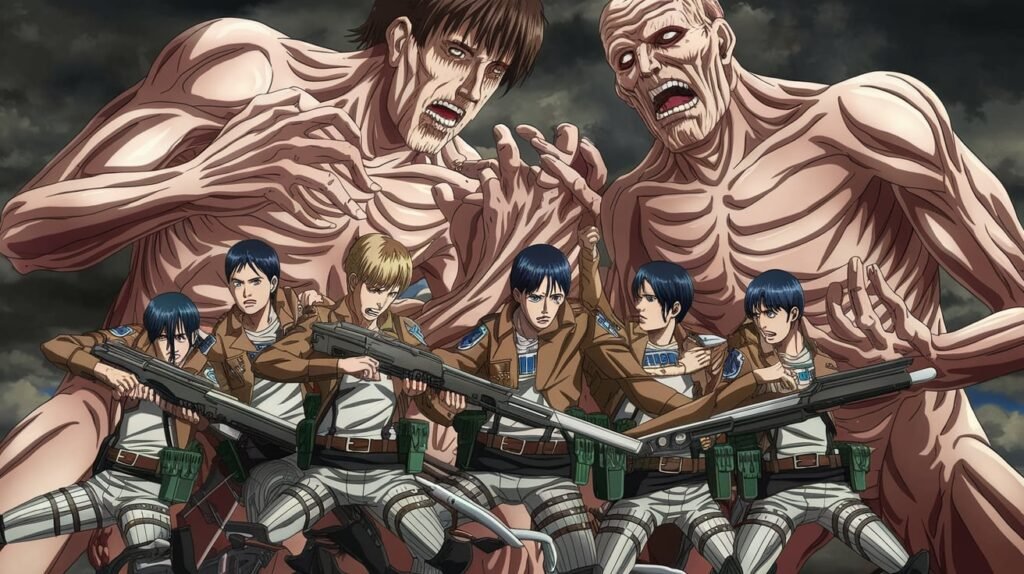
Character Development and New Introductions
In the final season of Attack on Titan, character development takes center stage as we witness profound transformations in both returning and new characters. The narrative intricately weaves the arcs of familiar faces, alongside the compelling journeys of newcomers like Gabi Braun and Falco Grice, creating a rich tapestry that underscores the complexities of human nature in times of conflict.
Gabi Braun emerges as a pivotal character, representing the younger generation deeply entrenched in the cycle of hatred and violence. Initially introduced as a fervent warrior for Marley, her motivations are deeply rooted in a desire to honor her family and assert her identity. Throughout Attack on Titan season 4, Gabi faces moral dilemmas that challenge her perspective, forcing her to confront the consequences of her beliefs. Her character arc culminates in moments of clarity, illustrating how deeply entrenched ideologies can evolve through personal experience and empathy.
Falco Grice serves as an essential counterpoint to Gabi, embodying the potential for understanding and compassion amidst the chaos. His growth from a loyal soldier into a more introspective character provides a nuanced exploration of the cost of loyalty and the burdens of expectations. Falco’s internal struggles and relationships, particularly with Gabi, add layers to the narrative and emphasize the theme of personal agency in the face of overarching societal narratives.
On the other hand, the development of established figures like Eren Yeager and Reiner Braun is equally significant. Eren’s transformation from a determined youth to a complex anti-hero challenges viewers’ perceptions of morality and justice. Reiner’s grappling with his dual identity as both a warrior and a soldier creates a poignant commentary on the nature of conflict. As Attack on Titan season 4 unfolds, these character arcs not only highlight individual struggles but also reflect broader themes of loyalty, redemption, and the cyclical nature of violence.
Themes and Symbolism in the Final Season
The final season of Attack on Titan delves deeply into complex themes that resonate with the audience, most notably the notions of freedom, sacrifice, and the cyclical nature of hatred. The struggle for freedom is a recurring motif, embodied by the characters’ relentless fight against the oppressive structures represented by the Titans and the walls that confine them. This quest for liberation is poignantly illustrated through Eren Yeager’s transformation and his willingness to go to extreme lengths, raising profound questions about the cost of freedom. The series encourages viewers to reflect on what true freedom entails, especially when it involves the subjugation of others.
Sacrifice emerges as another pivotal theme in the final season. Characters often face the grim reality that attaining their goals may demand personal sacrifices, some grave. The depiction of sacrifice within Attack on Titan serves as a powerful narrative device, compelling audiences to grapple with the moral dilemmas associated with these choices. The characters’ decisions to fight for their beliefs, even at the expense of their own lives, evoke a sense of reverence for those who commit themselves to a cause, regardless of the turmoil it generates.
Moreover, the cyclical nature of hatred is intricately explored, as Attack on Titan illustrates how generational trauma and animosity perpetuate conflict. The series highlights the destructive power of vengeance and raises questions about the possibility of breaking this cycle. Symbolism plays a crucial role in conveying these themes, particularly through the representation of Titans and the encompassing walls. The Titans symbolize the monstrous aspects of humanity, while the walls encapsulate both physical and psychological barriers. The interactions between these elements create a rich tapestry of meaning, inviting audiences to engage critically with the narrative. Thus, the final season of Attack on Titan serves as both a culmination of the series and a profound commentary on the complexities of human nature.
Animation and Artistry: A Shift in Production
The final season of Attack on Titan marks a significant evolution in terms of animation quality and artistic direction, particularly under the production of MAPPA. Transitioning from Wit Studio, MAPPA faced the formidable challenge of maintaining the visual fidelity that fans had come to expect while introducing its own unique flair. One notable aspect of this shift is the overall art style, which has leaned towards a more dynamic and fluid execution. This change is evident in the way characters and Titans are animated, with heightened realism and meticulous attention to detail, capturing the visceral intensity of battles.
Directorial choices also play a critical role in this shift. MAPPA’s direction has incorporated innovative visual storytelling techniques that enhance viewer engagement. For instance, the use of contrasting color palettes and shading techniques effectively conveys the emotional weight of pivotal moments. The animation team has also embraced new CGI elements, blending them seamlessly with traditional hand-drawn animation to create striking visuals during intense action sequences. This blend not only showcases the hard-hitting clashes between characters and Titans but also elevates the overall aesthetic quality of Attack on Titan Season 4.
The final season has proved to be a testing ground for MAPPA, especially with sequences that demand high levels of action choreography. Animation quality could make or break the audience’s connection to critical scenes, and the production team has risen to this challenge. Each frame is carefully crafted to ensure that the emotions of the characters are palpable, even during the most chaotic battles. This dedication to quality has resulted in a visually captivating experience that underscores the series’ epic themes and character arcs, ultimately leaving a lasting impact on its audience.
Reacting to Controversies and Audience Reception
The final season of Attack on Titan, aptly titled “Attack on Titan Season 4,” has sparked a myriad of debates and controversies among its dedicated fanbase. Central to these discussions are the character decisions made throughout the season, which some fans perceived as inconsistent or contrary to the characters’ established arcs. The evolution of key figures such as Eren Yeager, in particular, has been a focal point of contention. Many viewers have expressed their dissatisfaction regarding Eren’s transformation, arguing that it diverged from the moral complexity that characterized earlier seasons.
Additionally, the pacing of “Attack on Titan Season 4” has garnered mixed reviews. While some fans appreciate the series’ ambitious storytelling, others contend that the rapid progression of events left little room for character development. This perception has led to a divide among audiences, resulting in heated discussions across social media platforms and fan forums. Many viewers took to Twitter to share their thoughts, often trending hashtags related to their discontent or support for specific plot points and character arcs.
The adaptation choices made by the production team have further fueled these controversies. Fans of the original manga often scrutinize how closely the anime aligns with the source material, particularly as the final season approached its climax. This scrutiny highlights the challenges of adapting a sprawling narrative with numerous intricate storylines and character motivations. Ultimately, these debates contribute to the lasting impact of “Attack on Titan Season 4” on its legacy. The willingness of fans to engage in discussions—whether positive or negative—underscores the significance of the series within the anime community and its position in the broader cultural landscape.
Streaming and Broadcast Timeline
The final season of “Attack on Titan,” titled Attack on Titan Season 4, has been divided into multiple parts, each with a carefully curated release schedule that has kept fans eagerly anticipating each new episode. The first part of Season 4 premiered on December 7, 2020, and concluded with its last episode on March 29, 2021. This initial run consisted of 16 episodes, which were broadcast weekly on the popular streaming platform Crunchyroll and Funimation, making it accessible to a global audience.
Following the conclusion of Part 1, a brief hiatus ensued before the release of Part 2, which kicked off on January 9, 2022, ultimately wrapping up with Episode 28 on April 4, 2022. This second segment, like its predecessor, garnered significant viewership numbers and further solidified the series’ reputation as a monumental success in the anime industry. The anticipation built through engagement on social media platforms, fan discussions, and promotional materials played a vital role in maintaining interest throughout this phase.
Part 3 of Attack on Titan Season 4 was announced as a two-episode special that started airing on March 3, 2023, with the conclusion expected on a later date in the same year. Such segmented releases not only heightened viewer anticipation but also encouraged deeper discussions among fans, enhancing their emotional investment in the storyline and characters. The staggered timeline allowed for the series to capitalize on its massive popularity, leading to notable achievements in viewership across different demographics.
This strategic release plan has not only successfully engaged the existing fanbase but has also attracted new viewers, contributing to the global phenomenon of “Attack on Titan.” As the finale approaches, many are reflecting on the unique journey this series has embarked on, painting a remarkable portrait of a narrative that resonates with audiences worldwide.
The Legacy of Attack on Titan
Since its inception, Attack on Titan has carved a remarkable niche within the anime industry, leaving an indelible mark on both viewers and creators alike. As we delve into Attack on Titan Season 4, it becomes increasingly evident that its legacy transcends mere entertainment, influencing the nature of animated storytelling. The series has redefined the expectations of audiences, elevating narrative complexity and character development to new heights.
When considering the cultural impact of Attack on Titan, one cannot overlook its contribution to the resurgence of dark fantasy themes within anime. The raw, unfiltered portrayal of human emotions, alongside the moral ambiguities faced by its characters, has resonated deeply with fans. This multifaceted approach to storytelling has encouraged a shift within the industry, prompting other creators to explore similarly layered narratives. As a result, Attack on Titan has set a precedent for future anime, inspiring an influx of series that delve into darker themes and complex character arcs.
The fan culture surrounding Attack on Titan Season 4 is another testament to its legacy. The series has cultivated a passionate community that engages in spirited discussions, fan art, and theory crafting. This interactive relationship between the series and its audience has transformed viewing into an immersive experience, where fans actively participate in the narrative discourse. In an era where anime has become increasingly accessible, the collective enthusiasm for Attack on Titan highlights its pivotal role in shaping the landscape of modern fandom.
In conclusion, the enduring legacy of Attack on Titan is a blend of its innovative storytelling and the profound impact it has had on both the anime industry and fan culture. As we witness the concluding chapters in Attack on Titan Season 4, it is clear that this series will be remembered as a cornerstone of contemporary anime history.
Looking Ahead: Future of Attack on Titan
The conclusion of the highly acclaimed anime series, Attack on Titan Season 4, has raised questions about the future of the franchise. Given its immense popularity and complicated narrative, there are numerous avenues to explore beyond the anime. Speculation suggests that the success of this final season could pave the way for spin-offs focused on different characters, untold stories, and even alternate timelines within the expansive universe created by Hajime Isayama.
One possible direction for a spin-off could center around the earlier days of the Marleyan Empire, providing deeper insights into the history and ideology that shaped the ongoing conflict in Attack on Titan. Such a narrative could introduce new characters and perspectives, allowing fans to further engage with the world they have grown to love. Moreover, given the rich lore already established, adaptations focusing on specific arcs or deeper character studies could also resonate well with the audience.
Additionally, the conclusion of Attack on Titan Season 4 might reignite interest in the original manga series. Many fans who were drawn to the anime might now be curious to delve into the manga for a more comprehensive understanding of the story, including any elements that might differ from the animated adaptation. Consequently, this resurgence of interest could lead to increased sales of the manga and related merchandise.
The potential for new merchandise cannot be overlooked; collectibles, artworks, figurines, and other memorabilia tied to the Attack on Titan franchise are likely to continue thriving, capitalizing on the excitement surrounding the series conclusion. Overall, while “Attack on Titan” may be concluding in its current form, the franchise’s legacy is poised to live on through various adaptations, merchandise, and a revitalized audience hungry for more content.

